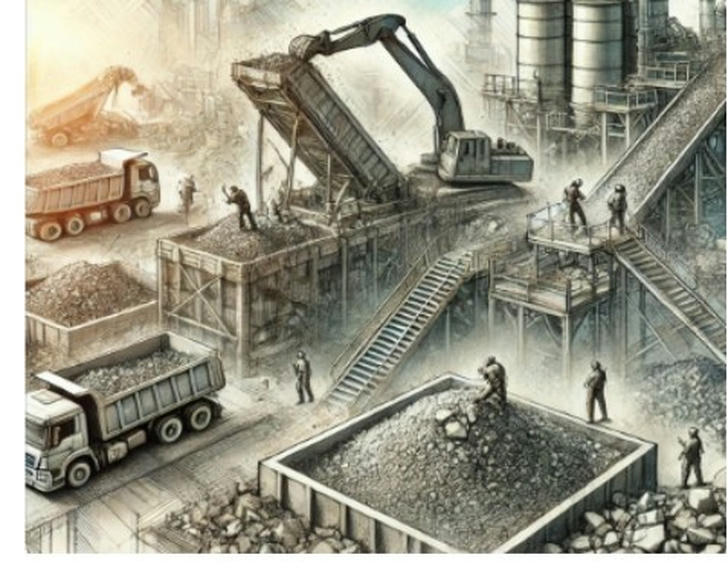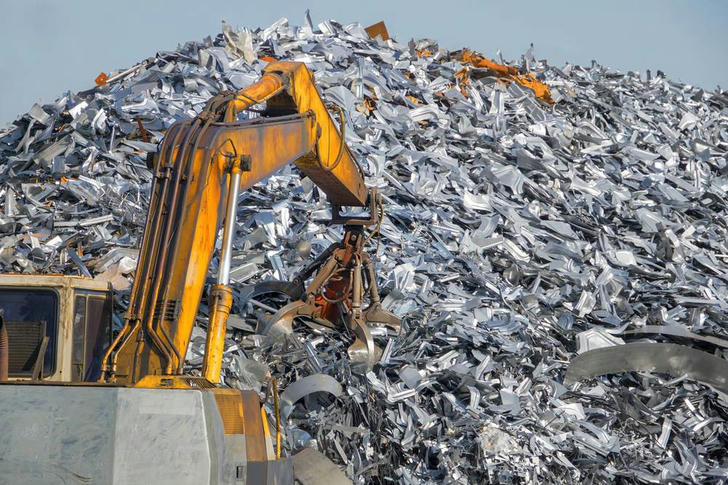Recyclable materials may revolutionize the construction industry in the future
The construction industry significantly impacts the environment, contributing to about 38% of global CO2 emissions. It consumes vast amounts of natural resources like water, energy, and raw materials, while generating large quantities of waste. Key environmental concerns include high carbon emissions from material production, especially concrete and steel, deforestation for wood, and excessive energy usage in building operations. Additionally, construction activities cause habitat destruction, soil degradation, and pollution, further intensifying the industry's ecological footprint. Sustainable practices, like using recycled materials, are becoming crucial to mitigating these effects.

Types of Recycled Materials in Construction
Recycled materials can be broadly categorized into several types, each offering unique benefits and applications in construction:
1.Recycled Concrete

Recycled concrete aggregates (RCA) are produced by crushing demolished concrete structures. This material is primarily used for:
Base material for roads and pavements: RCA provides a solid foundation for roads, reducing the need for virgin aggregates.
New concrete production: RCA can replace up to 30% of virgin aggregates in new concrete mixes without compromising strength.
Landscaping: Recycled concrete can be used for decorative features and retaining walls.
2.Recycled Asphalt

Recycled asphalt pavement (RAP) is obtained from milling existing asphalt surfaces. Its applications include:
Asphalt production: RAP can be incorporated into new asphalt mixes, reducing the need for new asphalt binder.
Base layers: RAP can be used as a sub-base for roads and parking lots, offering excellent drainage and load-bearing properties.
3.Recycled Wood

Recycled wood comes from deconstructed buildings, pallets, and other wood products. Its uses include:
Structural framing: Salvaged wood can be used in new construction, providing a sustainable alternative to new lumber.
Flooring and paneling: Reclaimed wood adds character to spaces and can be processed into high-quality flooring.
Furniture: Recycled wood is increasingly popular in custom furniture, promoting unique designs and sustainability.
4.Recycled Metals

Recycled metals, particularly steel and aluminum, play a crucial role in construction. They are used for:
Structural elements: Recycled steel beams and columns are commonly used in commercial buildings, offering strength and durability.
Roofing and siding: Recycled aluminum and steel are often used for roofing materials, enhancing energy efficiency.
Reinforcement bars: Recycled steel bars (rebar) can replace virgin steel in concrete structures, maintaining structural integrity.
Case Studies: Successful Implementation of Recycled Materials

1. The Bullitt Center, Seattle, Washington
The Bullitt Center, often dubbed the "greenest commercial building in the world," showcases the potential of recycled materials in construction. The building features a range of sustainable practices, including the use of recycled concrete and reclaimed wood. By prioritizing local, recycled, and renewable materials, the Bullitt Center achieves a net-zero energy goal and serves as a model for sustainable architecture.
2. The High Line, New York City
The High Line, an elevated park built on a former railway track, exemplifies the innovative use of recycled materials. The project incorporated reclaimed steel and concrete, preserving the historic character of the site while creating a green space that attracts millions of visitors annually. The use of recycled materials not only reduced waste but also contributed to the park's aesthetic appeal.
3. The Edge, Amsterdam
The Edge, an office building in Amsterdam, is renowned for its sustainability features, including the use of recycled materials. The structure incorporates recycled concrete and wood, significantly reducing its carbon footprint. Additionally, the building's design maximizes natural light and energy efficiency, making it a leading example of sustainable construction.
Innovations Driving the Recycled Materials Movement

The push for recycled materials in construction is supported by various innovations, including:
1. Advanced Recycling Technologies
Innovations in recycling technologies have improved the quality and availability of recycled materials. For example, advanced crushing and sorting methods enable the efficient production of high-quality recycled aggregates from concrete and asphalt, ensuring they meet industry standards.
2. Life Cycle Assessment (LCA)
Life cycle assessment tools are increasingly being used to evaluate the environmental impact of construction materials. By assessing the full lifecycle of materials, from extraction to disposal, builders can make informed decisions about the sustainability of their choices.
3. Digital Platforms for Material Reuse
Emerging digital platforms connect contractors and suppliers with recycled materials, streamlining the procurement process. These platforms facilitate the reuse of materials from deconstruction projects, ensuring that valuable resources are not wasted.
4. Research and Development
Ongoing research into the properties and applications of recycled materials is driving innovation in construction. Studies are exploring the performance of recycled aggregates in various conditions and developing new composite materials that leverage the benefits of recycled content.
The Future of Recycled Materials in Construction

The future of recycled materials in construction looks promising, with several trends emerging:
1. Increased Demand for Sustainable Practices
As public awareness of environmental issues grows, there is a rising demand for sustainable construction practices. This trend will likely lead to a greater emphasis on recycled materials as builders strive to meet consumer expectations.
2. Innovation and Research
Continued investment in research and development will drive innovations in recycling technologies and material applications. This will enhance the quality and performance of recycled materials, making them even more attractive for construction projects.
3. Collaboration and Partnerships
Collaboration between stakeholders—governments, private sector companies, and non-profit organizations—will play a crucial role in advancing the use of recycled materials. By working together, these groups can develop comprehensive recycling programs and promote best practices in sustainable construction.
4. Integration of Smart Technologies
The integration of smart technologies, such as Building Information Modeling (BIM), can facilitate the design and use of recycled materials in construction. BIM allows for better planning and visualization of projects, helping to optimize the use of recycled content.
